Recombinant Human C1QB protein(Met1-Ala253), His-tagged
| Cat.No. : | C1QB-596H |
| Product Overview : | Recombinant Human C1QB (NP_000482.3)(Met 1-Ala 253) was expressed in Insect Cells, with a carboxy-terminal polyhistidine tag. |
| Availability | April 18, 2025 |
| Unit | |
| Price | |
| Qty |
- Specification
- Gene Information
- Related Products
- Case Study
- Application
- Download
| Species : | Human |
| Source : | Insect Cells |
| Tag : | His |
| Protein Length : | 1-253 a.a. |
| Form : | Lyophilized from sterile 50mM Tris, 100mM NaCl, 10% Glycerol, 0.5mM TCEP, pH 7. 5. Normally 5 % - 8 % trehalose, mannitol and 0.01% Tween80 are added as protectants before lyophilization. |
| Molecular Mass : | The recombinant human C1QB consists of 237 amino acids with the predicted molecular mass of 25.2 kDa. As a result of glycosylation, rhC1QB migrates as an approximately 30 kDa band in SDS-PAGE under reducing conditions. |
| Endotoxin : | < 1.0 EU per μg of the protein as determined by the LAL method |
| Purity : | > 94 % as determined by SDS-PAGE |
| Storage : | Samples are stable for up to twelve months from date of receipt at -20°C to -80°C. Store it under sterile conditions at -20°C to -80°C. It is recommended that the protein be aliquoted for optimal storage. Avoid repeated freeze-thaw cycles. |
| Reconstitution : | It is recommended that sterile water be added to the vial to prepare a stock solution of 0.2 ug/ul. Centrifuge the vial at 4°C before opening to recover the entire contents. |
| Gene Name | C1QB complement component 1, q subcomponent, B chain [ Homo sapiens ] |
| Official Symbol | C1QB |
| Synonyms | C1QB; complement component 1, q subcomponent, B chain; complement component 1, q subcomponent, beta polypeptide; complement C1q subcomponent subunit B; complement component C1q, B chain; complement subcomponent C1q chain B; |
| Gene ID | 713 |
| mRNA Refseq | NM_000491 |
| Protein Refseq | NP_000482 |
| MIM | 120570 |
| UniProt ID | P02746 |
| ◆ Recombinant Proteins | ||
| C1QB-1132M | Recombinant Mouse C1QB Protein, His (Fc)-Avi-tagged | +Inquiry |
| C1QB-1042R | Recombinant Rat C1QB Protein | +Inquiry |
| C1QB-2561M | Recombinant Mouse C1QB Protein | +Inquiry |
| C1QB-926Z | Recombinant Zebrafish C1QB | +Inquiry |
| C1QB-2136HFL | Recombinant Full Length Human C1QB Protein, C-Flag-tagged | +Inquiry |
| ◆ Cell & Tissue Lysates | ||
| C1QB-651HCL | Recombinant Human C1QB cell lysate | +Inquiry |
Case 1: Kishore U, et al. J Immunol. 2003
The initial step in activating the classical complement pathway by immune complexes involves C1q's globular heads binding to the Fc regions of aggregated IgG or IgM. Each head is made up of parts from one A (ghA), one B (ghB), and one C chain (ghC). We expressed these components as soluble proteins in E. coli, linked to maltose-binding protein (MBP). These purified fusion proteins (MBP-ghA, -ghB, -ghC) showed varied binding affinities to aggregated IgG and IgM, and also to C1q-binding peptides from HIV-1, HTLV-I, and beta-amyloid. MBP-ghA bound to both IgG and IgM, and the HIV-1 gp41 peptide; MBP-ghB preferred IgG and beta-amyloid; while MBP-ghC favored IgM and the HTLV-I gp21 peptide. MBP-ghA and MBP-ghB inhibited C1q-dependent hemolysis, with MBP-ghC being more effective with IgM-coated cells. These proteins also bound specifically to apoptotic PBMCs, suggesting that the C1q globular head area is structured into three independent modules, which together form a versatile heterotrimer.
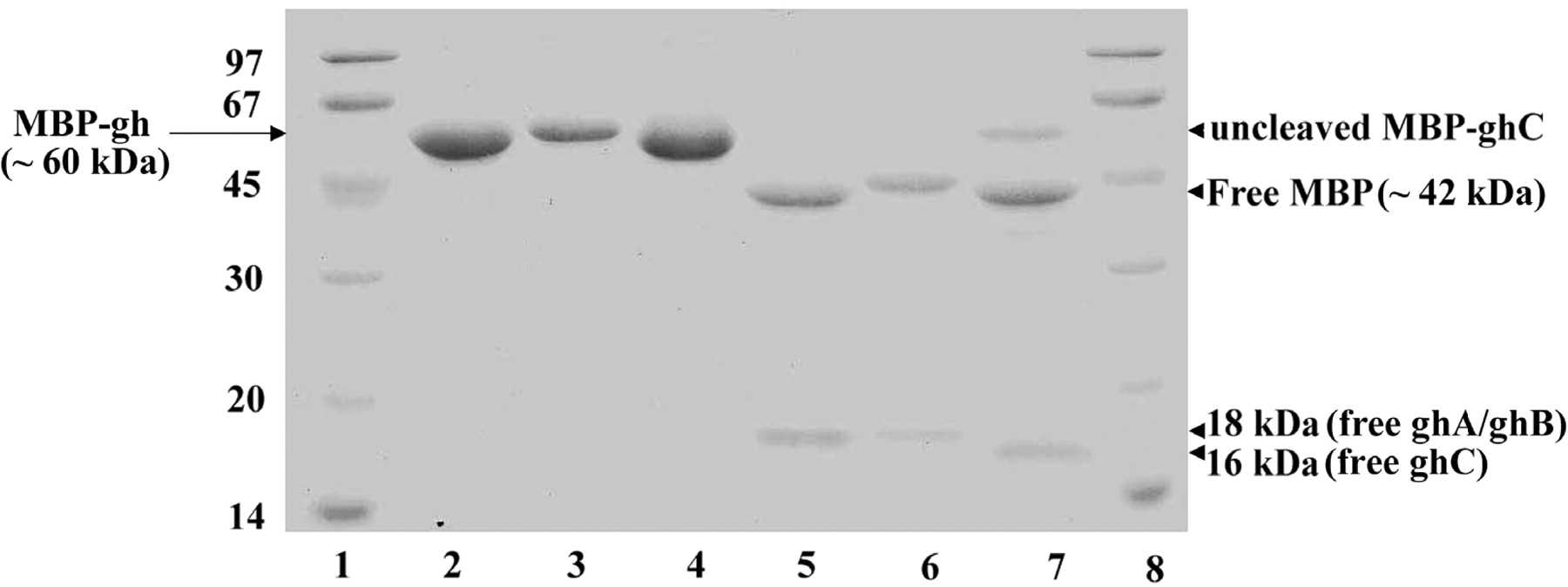
Fig1. SDS-PAGE (12% w/v, under reducing conditions) analysis of the purified fusion proteins, MBP-ghA, -ghB, and -ghC.
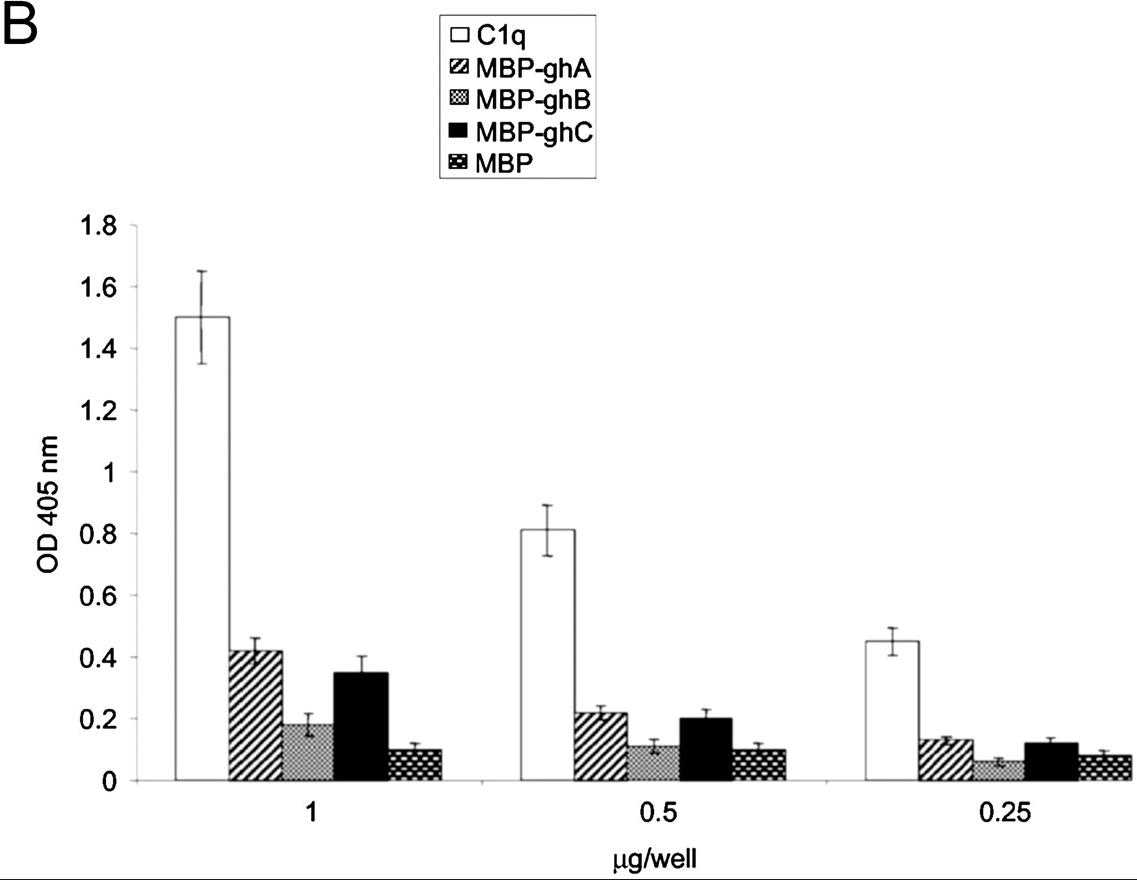
Fig2. Binding of heat aggregated IgG and IgM to solid phase MBP-ghA, -ghB, and -ghC.
Case 2: Ji L, et al. Pharmacol Res. 2023
We're leveraging single-cell RNA sequencing (scRNA-seq) to zoom in on individual cells and really get a grip on cellular activities. In this study, we're digging into how C1QB and NKG7 influence the immune setup in pancreatic islets for folks dealing with type 1 diabetes (T1DM). By analyzing T1DM-related scRNA-seq data from the GEO database, researchers were able to perform cluster analysis and enrichment analysis to identify different cell types and understand their functions. The results showed that pancreatic islet samples in T1DM have a wide variety of highly variable genes, with macrophages and T lymphocytes as the predominant cell types. C1QB and NKG7 appear to be key genes influencing these cells. Silencing C1QB impacts monocyte differentiation into macrophages, while NKG7 affects T lymphocyte activation. In experiments with a rat model of T1DM, silencing these genes reduced macrophage and T lymphocyte numbers, in turn easing damage to pancreatic islet β-cells.
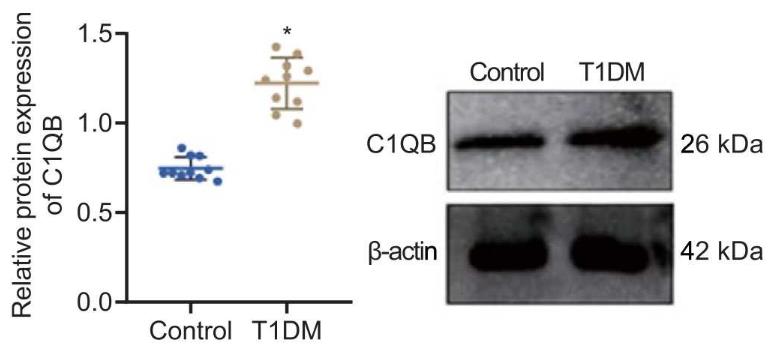
Fig1. C1QB protein expression in the pancreatic islets of T1DM rats measured by Western blot.
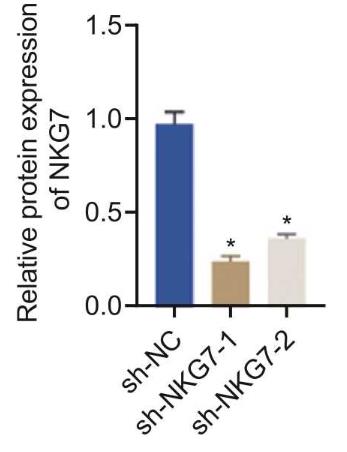
Fig2. C1QB silencing efficiency measured by Western blot.
Recombinant Human C1QB (rhC1QB) plays a key role in the immune system and is used in both research and industry for its involvement in the body's defense mechanisms.
In research, rhC1QB is crucial for exploring how the complement system gets activated and its importance in recognizing and removing immune complexes. By kicking off the complement cascade, it helps with opsonization and clearing pathogens. Scientists study rhC1QB to see how it works with immune complexes and its effects on things like phagocytosis and cytokine regulation. Plus, it's used in immunoassays like ELISA and immunohistochemistry for checking its levels and locations in tissues and various health conditions.
On the industrial side, rhC1QB is produced for drug discovery, focusing on treatments for diseases tied to the complement system. Since it's involved in immune responses, it's a target for therapies dealing with conditions like lupus and glomerulonephritis. The recombinant protein is made using systems like Sf9 insect cells with a His tag for easy purification, ensuring reliable scientific research. It also helps create diagnostic tools and antibodies to measure C1QB in samples, supporting studies on its role and related diseases.
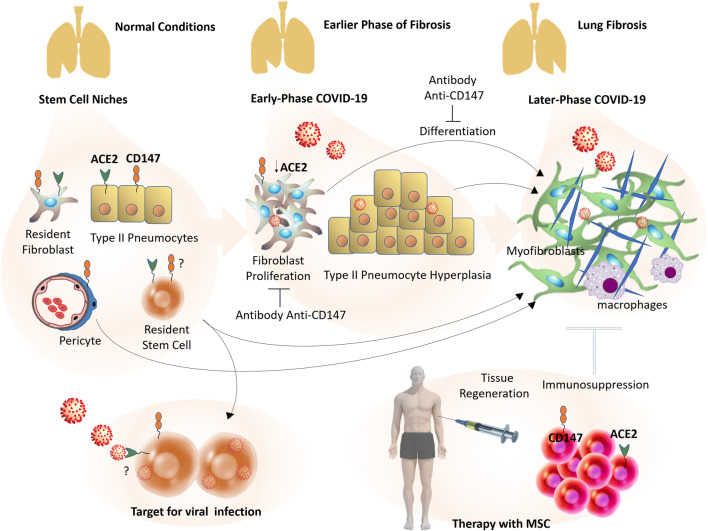
Fig1. Stem cells in COVID-19: from a target for viral infection to therapy with mesenchymal stem cells (MSC). (Henning Ulrich, 2020)
Not For Human Consumption!
Inquiry
- Reviews
- Q&As
Ask a Question for All C1QB Products
Required fields are marked with *
My Review for All C1QB Products
Required fields are marked with *
Inquiry Basket


